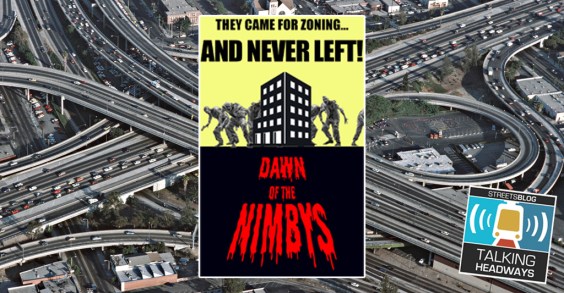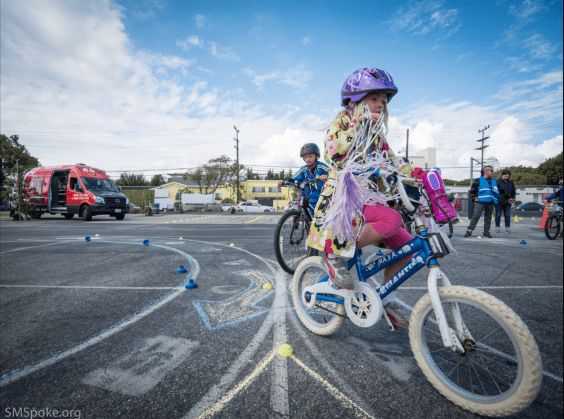
San Francisco held its inaugural car-free "Sunday Streets" event last weekend. New Yorker Jen Petersen was there and files this report.
Whatever the weather, San Francisco’s
Fisherman’s Wharf doesn’t suffer from a shortage of dollar-shelling,
strolling tourists on weekends, and so clearing street space for more
people-powered mobility on a sunny morning had instant takers.
As was the case at New York’s Summer Streets, more than a few participants
simply stumbled upon the event. And since Civic Center and Fort Mason
was hosting the U.S.’s first Slow Food Nation, a foodie-drawing tribute
to regional, small-scale food producers, there was an even greater influx
of slow and deliberate pilgrims on this particular weekend. There
wasn’t a chance that the northern part of the route would
go un-used, though I wondered how many San Franciscans actually ventured
that way. But save for the artisan street vendors set up as usual at
Market Street and Embarcadero, the weekend-shuttered financial district
was still a tourist no-go zone.
South of the Ferry Terminal Building
(itself a regional foods marketplace), however, cyclists, walkers, rollerbladers,
and runners transitioned to the physical activity-promoting
leg of the route. And so rounding the bay’s curve to South Beach,
where the SF Giants’ AT&T Park was open for base running, and
the China Basin inlet, where Cheryl Burke Dance Studio offered Tribal
Belly, Afro-Colombian, Salsa, and East Coast swing dance classes all
morning, the re-appropriative potential of the street came to life. I maintain: there is no higher social use of street space than dancing!

And while the dance stage set up in
front of Pier 48 was a lively space, the China Basin/Mission
Bay stretch of the route felt fashioned by a place-marketing tour agency. Freshly-constructed condos and little else lined the street’s west
side, while barbed wire fencing barred bay access for most of the route.
But oh how that unobstructed sapphire bay view beckoned! I found
myself daydreaming about a waterfront Sunday Streets with free kayaks and canoes on offer.
Pedaling beyond condo-led redevelopment’s
reach, my thoughts turned to residents of the route’s immediately
adjacent, currently park-poor neighborhoods. Did they know about
the street closure, and had they toured this ribbon of their city on
car-free streets, taken in a free dance class, or at least breathed
in an unusually quiet view of the Bay Bridge, Alcatraz, and the Golden
Gate? Or was this Wharf-to-Bayview route more effective for place
marketing to the economically mobile, who might now add the yet-to-be-named,
still comparably industrial waterfront south of Mission Bay to their "possible purchase" map?

Regardless, there were many smiling
faces, and much inter-modal cooperation. For a city that has a hard
time holding on to families with children, San Francisco (or the wider
Bay Area) certainly has plenty who will show up with bikes, provided they can safely reach the designated
route. Family bike gangs were more numerous than spandex
and logo-covered road rider packs, Critical Massers (away at Burning
Man, perhaps?), or fixie-fixated hipsters. The traffic
current was slow, there were no lane markers for different modes and
paces, and riders helped to point out perilous streetcar tracks for
their fellow riders. And movers of all speeds even dismounted
and unlaced rollerblades to dance together, still helmeted, in
front of Pier 48. Maybe this is the most incisive
indicator of a successful Ciclovía-style event after all.
Photos 1 & 3 by Jen Petersen; Photo 2 by pecanpieguy/Flickr





